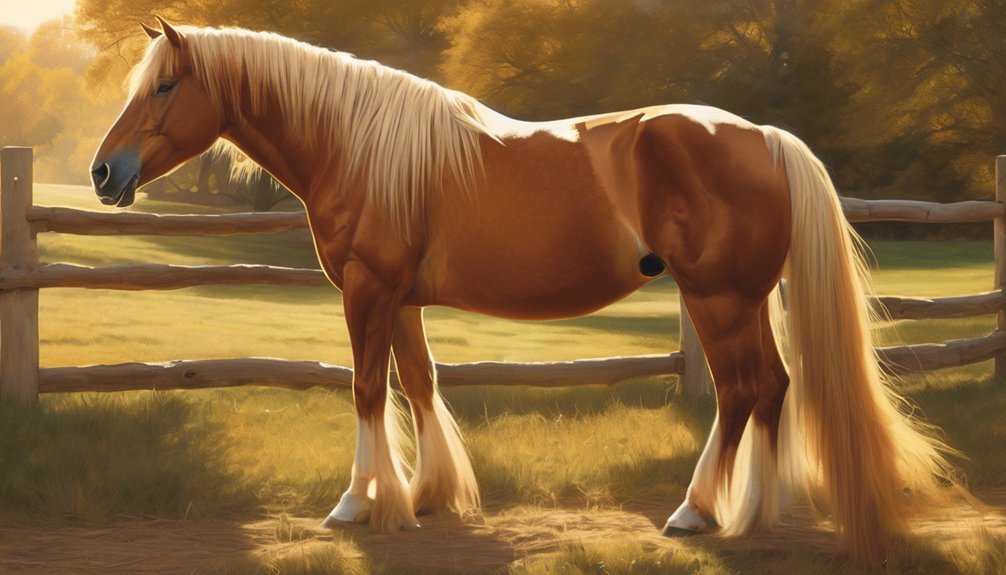
Did you know that using the wrong tools can actually lead to breakage in your horse's long mane? It's crucial to select the right combs and brushes to maintain the health and appearance of their mane. Regular grooming isn't just about keeping it tidy; it's about preventing tangles and damage. Discover the essential techniques and products that can make a significant difference in your grooming routine.
Key Takeaways
- Use a sturdy mane comb or brush with rounded tips to prevent pulling and damage while grooming long manes.
- Brush regularly with long, gentle strokes, starting from the roots and working toward the ends to avoid tangles.
- Apply detangling spray on problematic areas before using a wide-toothed comb to ease out knots without breakage.
- Wash and condition the mane every 1-2 weeks with equine-specific products for optimal cleanliness and health.
- Ensure your horse has a balanced diet and use UV protection sprays to prevent mane damage from environmental factors.
Choosing the Right Tools for Mane Grooming
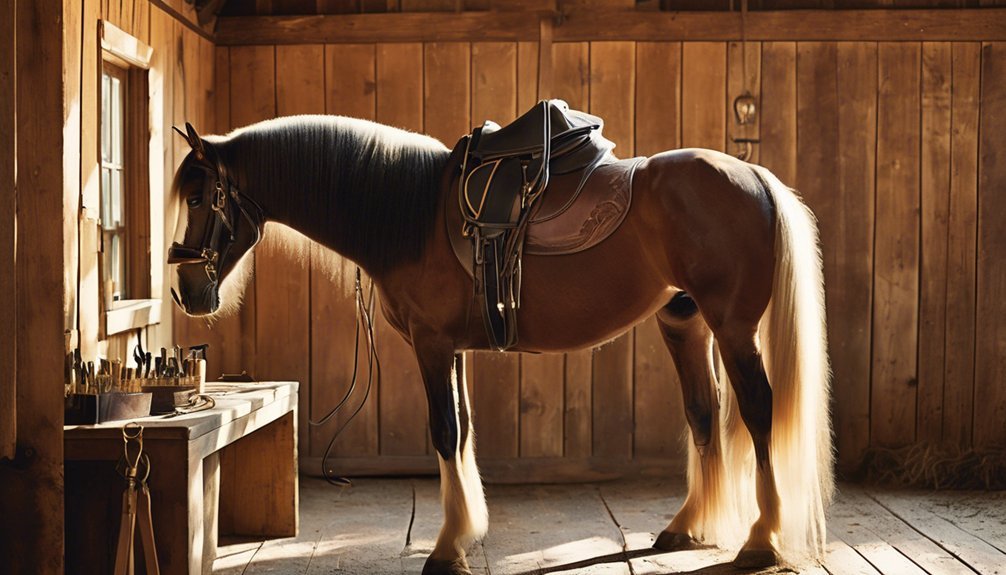
When it comes to grooming your horse's mane, choosing the right tools is essential for maintaining its health and appearance.
Start with a sturdy mane comb or brush specifically designed for equine use; these mane grooming tools help detangle without damaging the hair. Look for products that feature rounded tips to minimize pulling and discomfort.
A good pair of scissors is also vital for trimming split ends and creating a neat look. Additionally, invest in quality mane care products like detanglers or leave-in conditioners to nourish and protect against breakage.
Regular Brushing Techniques
Regular brushing is a crucial part of your horse's grooming routine, and it can make a significant difference in their overall health and appearance.
To maintain a luxurious mane, aim for a brushing frequency of at least every few days, adjusting based on your horse's activity level and environment. Use long, gentle strokes, starting from the roots and working your way to the ends to avoid pulling.
Technique variations, such as using a soft brush for the top layer and a firmer one for the underlayer, can help distribute natural oils. Always check for any irritations or changes in your horse's skin.
This simple act of care not only improves the mane's condition but also strengthens your bond with your horse.
Detangling Methods for Problematic Areas
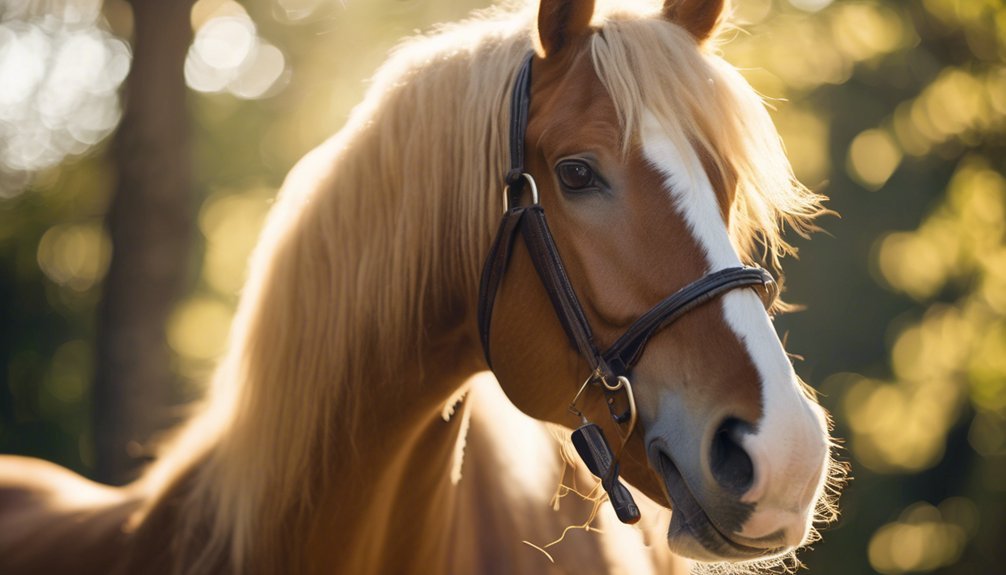
Even with consistent brushing, some areas of your horse's mane and tail can develop stubborn tangles.
To tackle these problematic spots effectively, start by applying a quality detangling spray, which helps loosen the knots.
Here's how to proceed:
- Use a wide-toothed comb to gently separate the hair.
- Work from the ends toward the roots, easing out the tangles slowly.
- Be patient; rushing can cause breakage and discomfort.
Washing and Conditioning Your Horse's Mane
A clean and well-conditioned mane not only enhances your horse's appearance but also promotes healthy hair growth.
Start by choosing a proper shampoo selection specifically formulated for equine use, ensuring it's gentle yet effective. Avoid human shampoos, as they can strip natural oils.
Wet your horse's mane thoroughly, then apply the shampoo, massaging it into the roots and down the length. Rinse thoroughly to remove all residues.
For conditioning, aim for a frequency that suits your horse's lifestyle—typically every 1-2 weeks. A high-quality conditioner helps nourish and hydrate the mane, reducing tangles and enhancing shine.
After conditioning, rinse again, ensuring no product remains. This routine will keep your horse's mane looking its best while promoting overall hair health.
Preventing Breakage and Damage
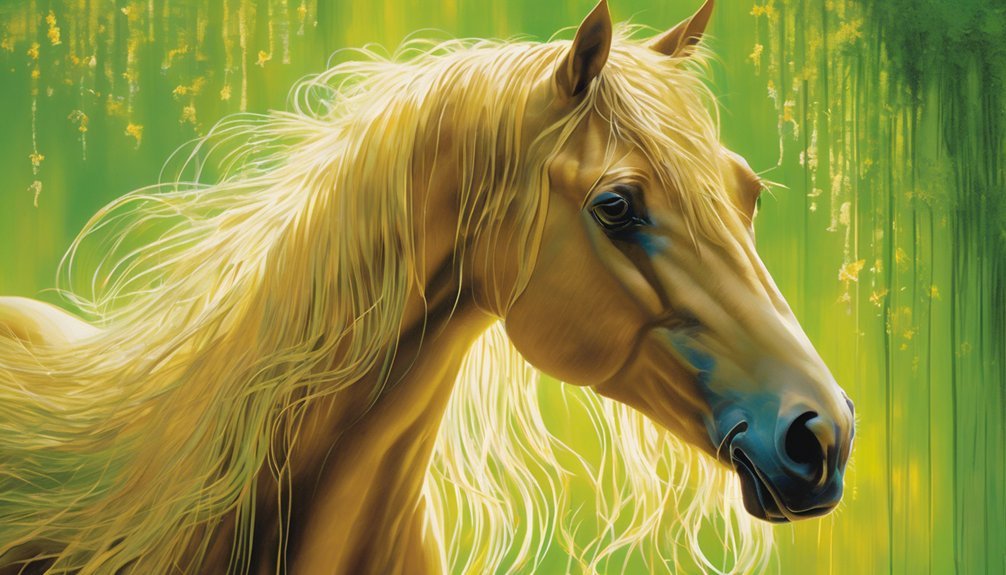
To keep your horse's mane healthy and strong, focus on preventing breakage and damage through proper care techniques. Start by addressing mane nutrition, ensuring your horse receives a balanced diet rich in vitamins and minerals. Strong hair starts from within!
Also, be mindful of environmental factors that can contribute to damage, such as sun exposure and harsh weather.
- Use UV protection sprays to shield against sunlight.
- Select soft, natural materials for grooming tools to minimize friction.
- Regularly check for tangles and knots to prevent pulling and breakage.
Seasonal Mane Care Tips
As the seasons change, adjusting your grooming routine is essential for maintaining your horse's mane in optimal condition.
During spring and fall, expect seasonal shedding; this is when you'll want to invest extra time in brushing to remove loose hair and prevent tangles. Use a wide-toothed comb or a mane brush to gently detangle.
In summer, humidity can lead to frizz and excess moisture buildup. Opt for a leave-in conditioner that helps combat humidity effects, keeping the mane manageable and shiny.
In winter, you'll need to protect the mane from harsh weather conditions. Consider using a neck cover to shield it from cold winds.
Mane Braiding and Styling Options
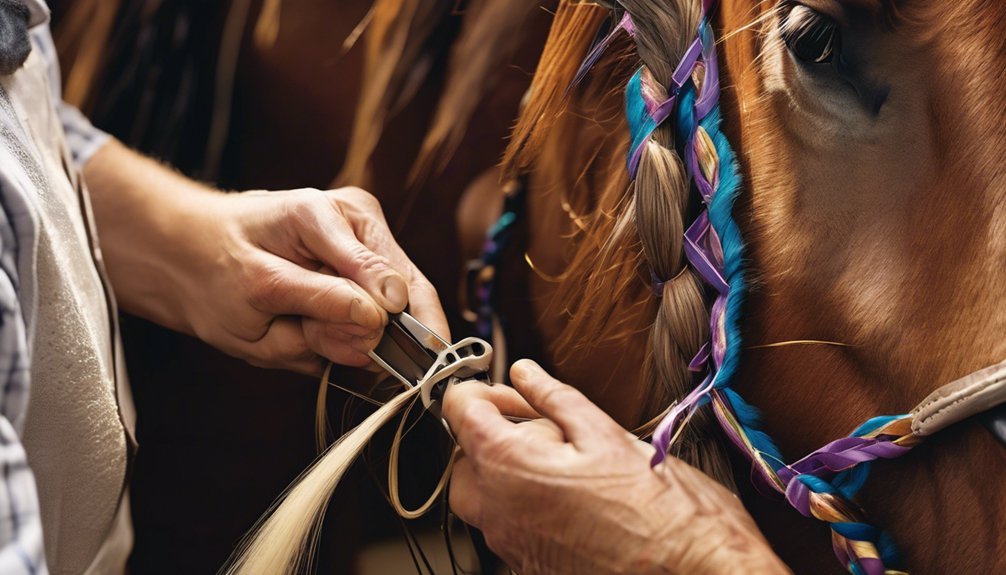
Five popular mane braiding and styling options can elevate your horse's appearance while providing practical benefits.
Whether you're prepping for a show or just want to enhance your horse's look, these braid styles can make a difference.
- French Braid: Offers a sleek, polished look, perfect for competitions.
- Fishtail Braid: Adds a unique twist, showcasing your horse's character.
- Simple Three-Strand Braid: Classic and easy to maintain, ideal for everyday rides.
These styles not only enhance aesthetics but also keep the mane tidy and manageable, reducing tangling during show preparations.
Experiment with these techniques to find what suits your horse best, creating a stunning presentation that captures attention and admiration.
The Importance of Regular Mane Checks
Maintaining a well-groomed mane is more than just about aesthetics; it plays a vital role in your horse's overall health and comfort.
Regular inspections of your horse's mane are essential for ensuring mane health. By checking for tangles, dirt, or skin irritations, you can prevent potential issues from developing. Pay attention to any signs of parasites or sores that could affect your horse's well-being.
A thorough examination also allows you to address any matting that may cause discomfort or restrict movement. Establishing a routine for these checks not only keeps your horse looking its best but also strengthens the bond between you.
Maintaining Overall Coat Health for a Beautiful Mane
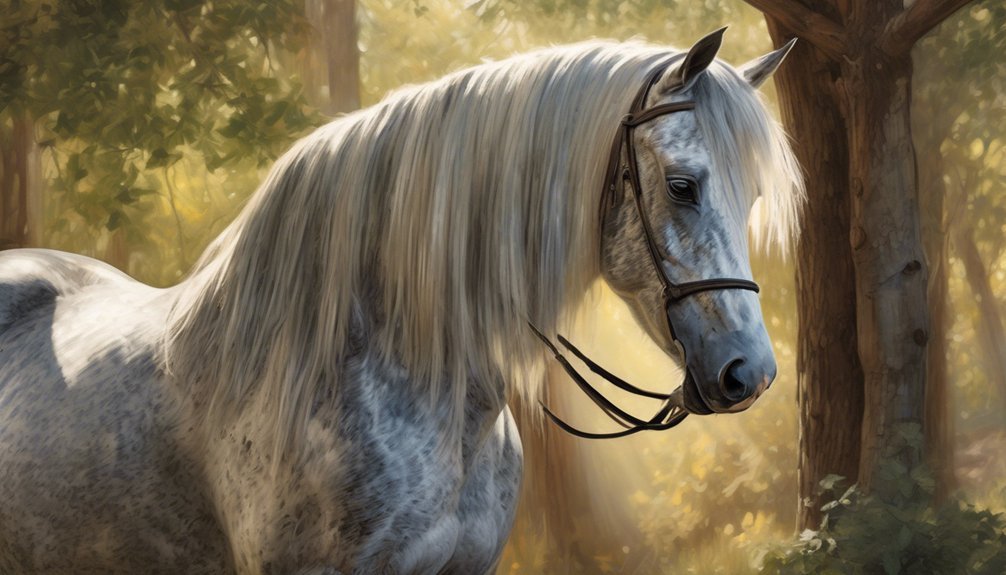
To achieve a beautiful mane, you must prioritize the overall health of your horse's coat. A well-nourished coat reflects your horse's vitality and directly impacts the mane's appearance.
Here are three key elements to consider:
- Balanced Nutrition: Ensure your horse receives a diet rich in vitamins and minerals to promote coat shine and strength.
- Hydration: Fresh water is essential; proper hydration keeps the coat supple and healthy.
- Environmental Factors: Protect your horse from harsh weather conditions, which can lead to dryness and damage.
Frequently Asked Questions
How Often Should I Trim My Horse's Mane?
You should trim your horse's mane every 4 to 6 weeks, depending on the desired mane length. Regular trimming keeps it manageable and healthy, promoting a neat appearance while preventing tangles and breakage.
Can I Use Human Hair Products on My Horse's Mane?
You shouldn't use human hair products on your horse's mane due to potential product safety issues. Instead, explore mane care alternatives specifically designed for equine needs, ensuring your horse's health and coat remain vibrant and safe.
What Natural Remedies Help With Mane Itching?
Did you know that over 30% of horses experience mane itching? To soothe your horse, try natural oils like coconut or olive oil, and consider herbal sprays infused with chamomile or calendula for relief.
How Do I Prevent My Horse From Rubbing Its Mane?
To prevent your horse from rubbing its mane, focus on proper mane care and regular inspections. Keep the mane clean, moisturized, and free from irritants. Address any underlying skin issues promptly for effective rubbing prevention.
Is It Safe to Dye My Horse's Mane?
Before you dye your horse's mane, consider it like choosing paint for a cherished canvas. Dye safety's crucial; opt for gentle mane colorants that won't irritate their skin. Always test first, ensuring your horse remains comfortable.
Conclusion
In conclusion, by dedicating time to proper grooming techniques and using the right tools, you can transform your horse's long mane into a stunning feature that turns heads. Isn't it worth the effort to ensure your horse's mane is not only beautiful but also healthy? Regular care and attention can prevent damage and promote growth, allowing you to enjoy the bond you share with your horse. So, embrace the grooming routine and watch your horse's mane flourish!





